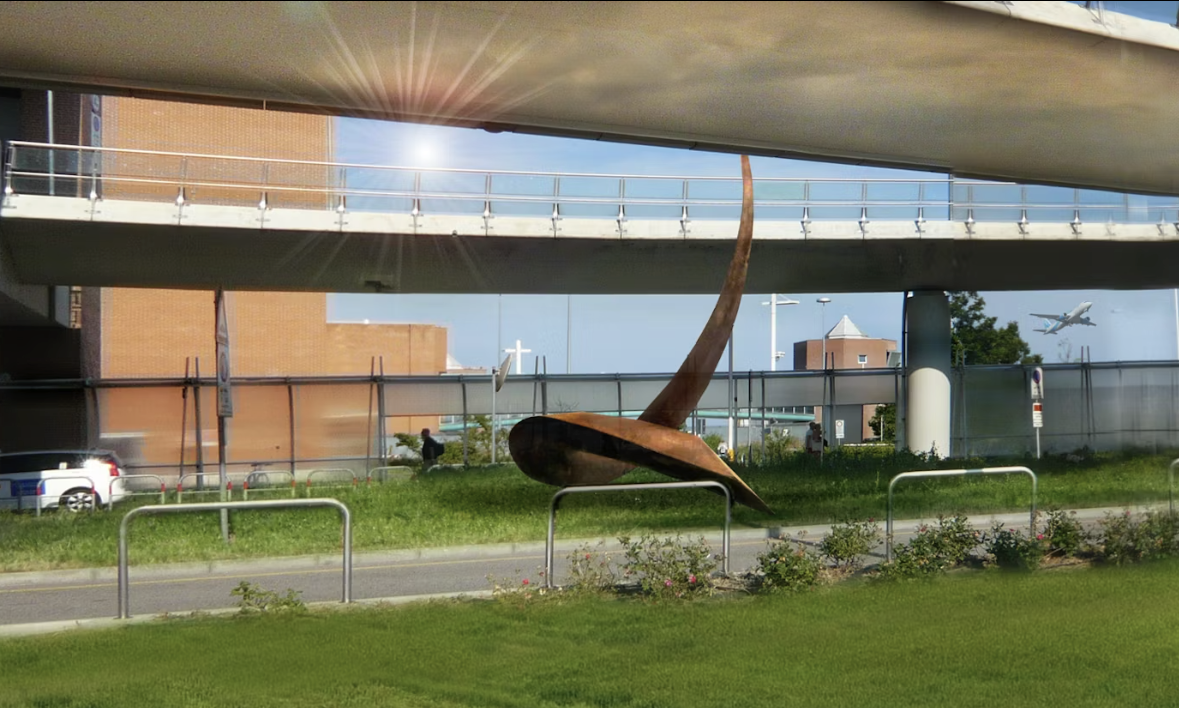Massimo Mazzone, Giacomo Tringali
Slancio
2015
Venice Marco Polo-Tessera Airport, Venice
In 2012 The SAVE (Venice Marco Polo-Tessera Airport) announced an international competition for the erection of a sculpture in the Venetian airport. The winning project was Slancio (Lunge) by Tringali and Mazzone in collaboration with Zhenru Liang and A.I.R Architects in Rome: a constructed sculpture, neither modeled nor sculpted, whose form resembles both the phases of airplane flight as well as those primordial implements belonging to the rural and seafaring memory of Veneto region.
The artwork is extracted from a triangular prism of COR-TEN steel that extends vertically with a helical movement, and reaches 9 meters high. The red and orange tones of COR-TEN A steel combine perfectly with the red brick of the airport, designed by architect Mar.
Massimo Mazzone is a sculptor, lecturer at the Brera Academy, but also an activist of anarchist thought and founder of several artistic groups and collectives. The figures of Nicola Carrino, Emanuele Severino, Massimiliano Fuksas and Alberto Abruzzese have played a central role in his academic training, thanks to whom he has developed and articulated a reflection on built sculpture that has become one of the main threads of his poetics.
The need to weave dialectical relationships between sculpture and society led him continuously over the years to found collectives and groups (Office of Ideas, com.plot system and Escuela moderna) giving rise to publications, exhibitions, dozens of participations in the Venice Biennale and even inter-faculty university training projects. Indeed, his Castel Gandolfo studio is a library and a dense archive of publications in which papers, drawings and modular sculptures and an art collection emerge.
His work redefines built sculpture according to an attitude that imagines the work as a construction of forms, words, and spaces. Therefore, Mazzone's work moves on the boundaries between art and architecture and visual poetry, assembling and disassembling layers of language and, often, thinking of sculpture as a space in which things happen. Over the past thirty-five years, his projects have often revealed themselves as constructed circles (masonry, wooden or otherwise) or self-built as temporary spaces or protest garrisons. But the principle of construction emerges in his work as the realization of immaterial, relational projects that aim to consolidate a general intellect around issues concerning the relationship between political art and territory and that, for example, have over the years given rise to the Escuela moderna library, an ongoing project of free reference text archiving.



